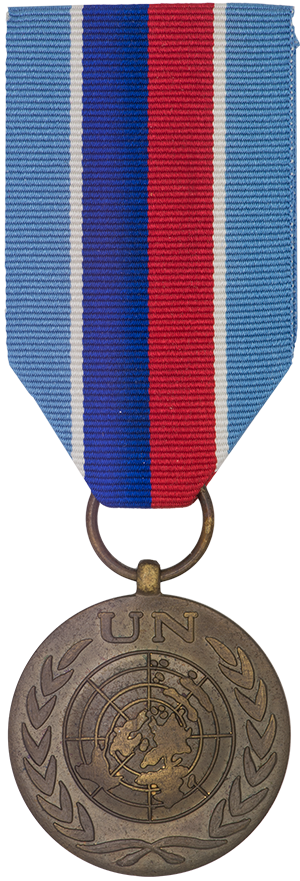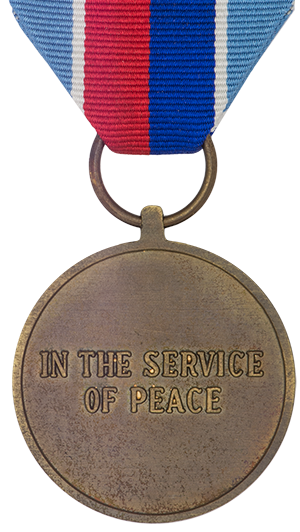UN Mission in Haiti (UNMIH)
The official description, eligibility, criteria and history of the UN Mission in Haiti (UNMIH).


Context
This mission established to help implement certain provisions of the Governors Island Agreement signed by the Haitian parties on 3 July 1993. In 1993, UNMIH’s mandate was to assist in modernizing the armed forces of Haiti and establishing a new police force. That mandate could not be carried out due to the non-cooperation of the Haitian military authorities. On the 31 July 1994 the UN approved the establishment of an advance team of UNMIH to institute the appropriate means of coordination with the multinational force, to carry out the monitoring of the operations of the force, to assess requirements and to prepare for the deployment of UNMIH upon completion of the mission of the multinational force. The Mission terminated in June 1996.
UNMIH was succeeded in July 1996 by the United Nations Support Mission in Haiti (UNSMIH). Its mandate expired on 31 July 1997. The Security Council established the United Nations Support Mission in Haiti (UNSMIH) 28 June 1996. In setting up UNSMIH, the Council underlined the need to support the commitment of the Government of Haiti to maintain the secure and stable environment established by the Multinational Force in Haiti.
UNTMIH was the third in the series of UN Peacekeeping Operations in Haiti. It was established the 30 July 1997 for a single four-month period ending on 30 November 1997. It was established to assist the Government of Haiti by supporting and contributing to the professionalization of the Haitian National Police (HNP).
UNTMIH was succeeded in December 1997 by the United Nations Civilian Police Mission in Haiti (MIPONUH). The Security Council established MIPONUH on the 28 November 1997. Unlike the three previous Missions, MIPONUH had no military component. Its mandate was to continue the work of the United Nations to support the Haitian National Police and to contribute to its professionalization.
MIPONUH was succeeded by the new International Civilian Support Mission in Haiti (MICAH) on 16 March 2000. Its mandate is to consolidate the results achieved by MIPONUH and its predecessor Missions of the United Nations in Haiti. MICAH is tasked with further promoting human rights and reinforcing the institutional effectiveness of the Haitian police and the judiciary, and with coordinating and facilitating the international community's dialogue with political and social actors in Haiti.
Eligibility and criteria
Awarded for 90 consecutive days of service in any of the missions listed above.
The UN strictly applies their medals policy and will not consider requests for initial issue of the UN medals that are submitted more than one year after repatriation from the mission area.
The qualifying service is not required for members killed or presumed killed while on assignment. In such cases, the medal may be awarded posthumously.
Description
A circular bronze alloy medal, 1.4 inches (35mm) in diameter.
On the obverse, the representation of the UN symbol surmounted by the straight letters UN, both in bas-relief.
On the reverse, an inscription bearing the words, "IN THE SERVICE OF PEACE" in English (and only in English).
A 0.5 inch (12mm) bronze ring, which holds the ribbon, passes through a small hollow ball at the top of a claw joined to the top of the medal.
The ribbon consists of the royal blue and red of the Republic of Haiti, bordered by the UN blue with two white lines denoting friendship between the two.
The bars are bronze in colour and bear the acronym of the specific mission.
Bar(s)
Bars specify for which mission(s) a person has been awarded this medal: UNMIH, UNSMIH, UNTMIH or MIPONUH.
- The UNMIH medal is worn alone (without bar) if the recipient only meets the criteria for that mission;
- The UNMIH medal is worn with only the UNSMIH, UNTMIH or MIPONUH bar for those who only meet the criteria for the UNSMIH, UNTMIH or MIPONUH mission; and
- The UNMIH medal to be worn with both the UNMIH and UNSMIH, UNTMIH or MIPONUH bars for those who meet the criteria for both the UNMIH mission and one or several of the other missions.
Wearing
The medal shall be worn in sequence prescribed in the Canadian Orders, Decorations and Medals Directive, and in the following manner:
- on the left breast, suspended from the ribbon described above, after the UNAMIR medal and before the MINUGUA medal.
One bar is worn centred on the ribbon; if multiple bars have been awarded, they shall be evenly spaced on the ribbon in the order earned, with the first bar earned worn the closest to the medal.
Postnominals
The use of a post-nominal is not authorized for this medal.
Historical notes
The following is a list of members who have died while serving in the theatre of operations:
- Pte Doucet J.L.M.B.